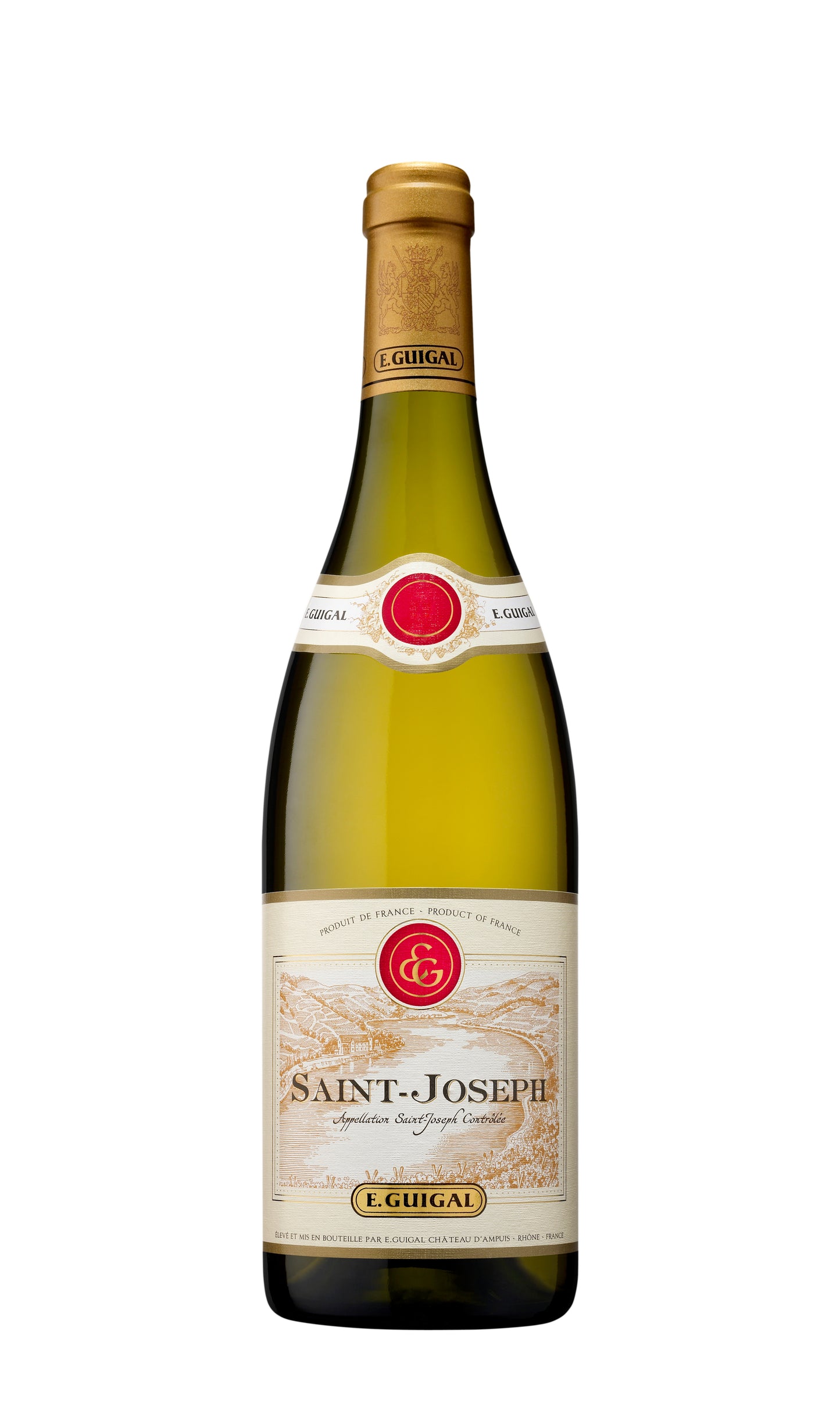1
/
of
1
E. Guigal St. Joseph Blanc - 2019 (750ml)
E. Guigal St. Joseph Blanc - 2019 (750ml)
Regular price
$44.99
Sale price
$44.99
Regular price
$44.99
Unit price
/
per
Eye : Brilliant clear straw yellow.
Nose : Powerful and complex nose. Strong notes of white flowers. Delicate oak aromas.
Palate : A clean supple attack. Very aromatic finish with pears and citrus fruits.
Overall : Exceptionally fresh and fruity. Round and powerful on the palate.
Availability:
7 In Stock
$25 Shipping on Orders +$299
Couldn't load pickup availability
Share :

- varietal
- Region
- Type
- Reviews
Product Review
Readers wanting a slightly more Burgundian, smoky, roasted nut, creamy styled white should check out the 2011 St.-Joseph Lieu-Dit St.-Joseph Blanc, which is also a blend of 90% Marsanne and 10% Roussanne aged in 100% new oak. The oak provides subtle notes of toast, but this full-bodied, creamy-textured white also exhibits plenty of creme brulee, honeyed orange, peach marmalade, quince and white currant characteristics. This beauty will offer terrific drinking over the next 5-7 years.
Product Score
91
Marsanne is a temperamental grape that when cultivated carefully can produce rich, elegantly scented wines, imparting a nutty, mineral component. While it is more than capable of standing on its own as a varietal wine (Chapoutier's Ermite being on of the finest examples), it also forms a great marriage with higher acid wines such as Roussanne and Viognier. While it originated in the northern Rhone, where it was named after the town it where it was thought to have been discovered, Marsanne has spread across the globe. Most plantings reside in Australia. It was one of the first grapes brought over from the old Wold however due to its finicky nature extra care and attention in the vineyard is paramount in producing quality wines. Penfold's Prodigy John Duval is a leading producer making a Marsanne Roussanne and Viognier Rhone style blend called the Plexus. Interest in Marsanne is picking up gradually in California however it will be a long time until it becomes anything like a mainstream varietal. Even the biggest Marsanne producers in the state, such as Qupe, Cline and Tablas Creek, maintain just than a handful of acres each. Washington State may prove to be the next hot bed for the varietal as producers continue to experiment with the Rhone style blend. The grape is also cultivated in north east Spain, where it goes by the name Marsana and in the Valais region of Switzerland. The Swiss refer to it as Ermitage Blanc and make a variety of styles ranging from bone dry to complex sweet wines.
The Rhone is one of France’s most important wine regions. Divided into two separate zones, the north is probably the most prestigious. It is home to the appellations of Condrieu, Côte Rôtie, St. Joseph, Hermitage, and Crozes-Hermitage. Syrah is king with the exception of the Condrieu (100% Viognier) and Hermitage, which also makes big whites from Marsanne and Roussanne. The South is a much larger region where most Cotes du Rhone and Cotes du Rhone Village come from. In the villages of Châteauneuf-du-Pape, Gigondas, Vacqueyras, and Rasteau, Syrah is blended in varying proportions with Grenache, Mourvedre, Cinsaut, and a host of obscure varieties such as Muscardin, Vaccarese, Terret and Counoise, to produce full-bodied reds brimming with energy.
White wine is a wine whose color can be pale-yellow, yellow-green, and yellow-gold colored. The wine is produced from a variety of grape varieties. The flavor and color comes from the juice of the grape and sometimes the skin of the grape as well. Interestingly, not all white wine comes from white grapes. Some select red grapes are used as in Champagne.


